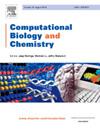使用系统生物学和计算药物设计技术在去势抵抗性前列腺癌中的药物重新定位。
IF 2.6
4区 生物学
Q2 BIOLOGY
引用次数: 0
摘要
背景与目的:去势抵抗性前列腺癌(CRPC)是由于对雄激素剥夺治疗的抵抗而导致患者死亡,几乎没有生存机会。因此,找到一种治疗CRPC的方法是具有挑战性和重要的,但发现一种新药非常耗时和昂贵。为了克服这些问题,我们在本研究中采用了药物重新定位(药物重新定位)策略。方法:从GEO数据库中提取CRPC和原发性前列腺样本的基因表达数据,鉴定DEGs。通过途径富集来发现deg在信号通路中的作用。为了鉴定枢纽蛋白,我们对PPI网络进行了重构和分析。确定候选药物,并进行分子对接分析和分子动力学模拟,以选择最有效的药物。然后通过MTT和qRT-PCR检测所选药物的有效性。结果:共鉴定出152个上调的DEGs和343个下调的DEGs,通过PPI网络分析,将IKBKB、SNAP23、MYC和NOTCH1基因作为枢纽引入。通过对接筛选和分子动力学分析,确定了IKBKB的候选药物,并选择柳氮磺胺吡啶作为最有效的药物。实验室分析证实了该药物的有效性,并观察到所有靶基因的表达减少。结论:本研究在CRPC中鉴定出IKBKB关键蛋白,选择柳氮磺胺吡啶作为合适的药物重定位候选药物,并通过试验证实其有效性。本文章由计算机程序翻译,如有差异,请以英文原文为准。
Drug repositioning in castration-resistant prostate cancer using systems biology and computational drug design techniques
Background and objective
Castration-resistant prostate cancer (CRPC) is caused by resistance to androgen deprivation treatment and leads to the death of patients and there is almost no chance of survival. Therefore, finding a cure to overcome CRPC is challenging and important, but discovering a new drug is very time-consuming and expensive. To overcome these problems, we used Drug repositioning (drug repurposing) strategy in this study.
Methods
Gene expression data of CRPC and primary prostate samples were extracted from the GEO database to identify DEGs. Pathway enrichment was performed to find the role of DEGs in signaling pathways. To identify hub proteins, the PPI network was reconstructed and analyzed. drug candidates were identified and to select the most effective drug, molecular docking analysis, and molecular dynamics simulation were performed. Then MTT and qRT-PCR tests were performed to check the effectiveness of the selected drug.
Results
A total of 152 upregulated DEGs and 343 downregulated DEGs were identified, and after PPI network analysis, IKBKB, SNAP23, MYC, and NOTCH1 genes were introduced as hubs. drug candidates for IKBKB were identified and by examining the results of docking screening and molecular dynamics, sulfasalazine was selected as the most effective drug. Laboratory analyses proved the effectiveness of this drug and a decrease in the expression of all target genes was observed.
Conclusion
In this study, IKBKB key protein were identified in CRPC, and sulfasalazine was selected as a suitable candidate for drug repositioning and its effectiveness was confirmed through tests.
求助全文
通过发布文献求助,成功后即可免费获取论文全文。
去求助
来源期刊

Computational Biology and Chemistry
生物-计算机:跨学科应用
CiteScore
6.10
自引率
3.20%
发文量
142
审稿时长
24 days
期刊介绍:
Computational Biology and Chemistry publishes original research papers and review articles in all areas of computational life sciences. High quality research contributions with a major computational component in the areas of nucleic acid and protein sequence research, molecular evolution, molecular genetics (functional genomics and proteomics), theory and practice of either biology-specific or chemical-biology-specific modeling, and structural biology of nucleic acids and proteins are particularly welcome. Exceptionally high quality research work in bioinformatics, systems biology, ecology, computational pharmacology, metabolism, biomedical engineering, epidemiology, and statistical genetics will also be considered.
Given their inherent uncertainty, protein modeling and molecular docking studies should be thoroughly validated. In the absence of experimental results for validation, the use of molecular dynamics simulations along with detailed free energy calculations, for example, should be used as complementary techniques to support the major conclusions. Submissions of premature modeling exercises without additional biological insights will not be considered.
Review articles will generally be commissioned by the editors and should not be submitted to the journal without explicit invitation. However prospective authors are welcome to send a brief (one to three pages) synopsis, which will be evaluated by the editors.
 求助内容:
求助内容: 应助结果提醒方式:
应助结果提醒方式:


